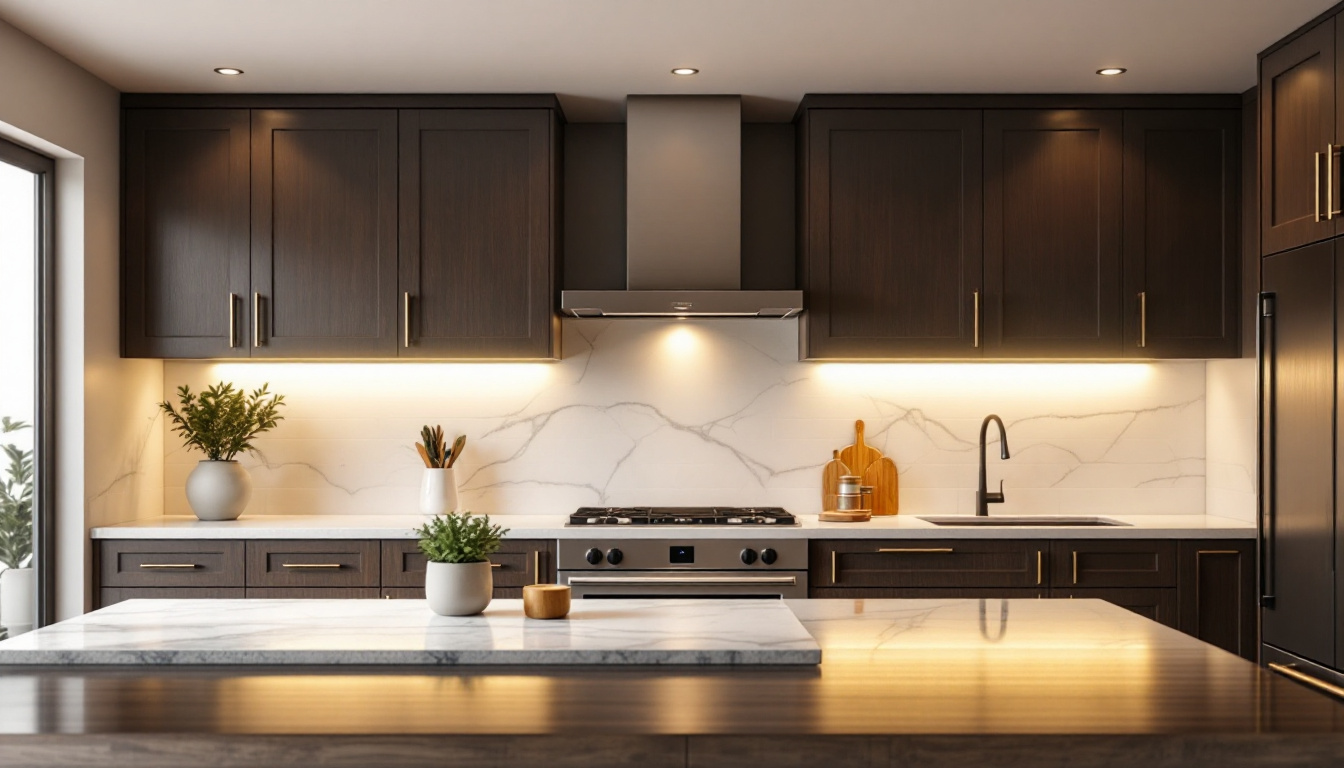
As the demand for energy-efficient lighting solutions continues to rise, LED lighting has emerged as a frontrunner in the industry. For lighting contractors, understanding the nuances of LED light cans is essential for delivering high-quality installations that meet client expectations. This guide aims to provide a comprehensive overview of LED light cans, their benefits, installation techniques, and considerations for lighting contractors.
LED light cans, also known as recessed lighting fixtures, are designed to be installed into the ceiling, providing a sleek and modern look while delivering effective illumination. These fixtures are versatile and can be used in various applications, from residential to commercial settings.
LED light cans are cylindrical enclosures that house LED bulbs. They are typically mounted above the ceiling line, allowing for a clean aesthetic that doesn’t interfere with the overall design of a space. Unlike traditional incandescent or fluorescent fixtures, LED light cans offer longer lifespans and greater energy efficiency.
The advantages of LED light cans extend beyond aesthetics. One of the primary benefits is energy efficiency. LED bulbs consume significantly less power than their incandescent counterparts, which can lead to substantial savings on electricity bills over time.
Moreover, LED light cans produce less heat, reducing the load on HVAC systems and contributing to a more comfortable indoor environment. Additionally, they have a longer lifespan, often lasting up to 25,000 hours or more, which means less frequent replacements and maintenance for contractors and clients alike.
In addition to energy savings, LED light cans are also known for their exceptional versatility in lighting design. They can be used to create various lighting effects, such as highlighting artwork, providing ambient lighting, or even task lighting in kitchens and workspaces. With adjustable beam angles and dimmable options available, homeowners and designers can customize the lighting to suit their specific needs and preferences, enhancing the overall functionality of a room.
Furthermore, the advancements in LED technology have led to a wide range of color temperatures, allowing users to choose from warm whites to cool daylight tones. This flexibility not only helps in setting the desired mood but also plays a crucial role in how colors are perceived within a space. For instance, warmer tones can create a cozy atmosphere in living areas, while cooler tones are often preferred in workspaces for better concentration and productivity.
Proper installation is crucial for ensuring optimal performance and longevity of LED light cans. Lighting contractors should be familiar with various installation techniques to accommodate different ceiling types and configurations.
Before installation, it is essential to determine the best locations for the light cans. Consider the purpose of the space, the desired lighting effect, and the layout of the room. For example, in a kitchen, it may be beneficial to install LED light cans above work areas to provide focused illumination.
Additionally, spacing is key. A common guideline is to place light cans approximately 4 to 6 feet apart, depending on the wattage of the bulbs and the height of the ceiling. This spacing helps to create an even distribution of light without creating harsh shadows. In larger spaces, such as living rooms or open-concept areas, it may be advantageous to use a combination of recessed lighting and accent lighting to highlight architectural features or artwork, enhancing the overall ambiance of the room.
The installation process for LED light cans typically involves several steps:
After the installation is complete, it’s advisable to test the fixtures to ensure they are functioning correctly. This includes checking for any flickering or dimming, which could indicate issues with the wiring or the fixture itself. Furthermore, consider the color temperature of the LED bulbs; warmer tones are often preferred for living spaces to create a cozy atmosphere, while cooler tones may be more suitable for workspaces where clarity and focus are paramount. Properly installed and selected LED light cans can significantly enhance the functionality and aesthetic appeal of any room.
While LED light cans offer numerous benefits, there are several considerations that lighting contractors should keep in mind to ensure successful installations.
Many clients prefer to have dimmable lighting options for added flexibility and ambiance. However, not all LED light cans are compatible with dimmer switches. It is crucial to select LED fixtures that are specifically designed for use with dimmers to avoid flickering or reduced performance.
When recommending dimmer switches to clients, consider the wattage and type of LED light cans being used. Some dimmers may not handle the lower wattage of LED lights effectively, leading to potential issues. For instance, traditional dimmers designed for incandescent bulbs may not provide the smooth dimming experience that LED users expect. It’s advisable to recommend modern, LED-compatible dimmers that can accommodate the specific load requirements and provide a seamless transition from bright to soft lighting.
Although LED lights generate less heat than traditional bulbs, proper heat management is still essential. Ensure that the LED light cans have adequate ventilation to prevent overheating, which can shorten the lifespan of the fixtures.
Using cans designed with thermal protection features can help mitigate heat-related issues. Additionally, educate clients on the importance of not covering or obstructing the fixtures, as this can lead to overheating and potential failure. It’s also worth discussing the installation environment; for example, if the cans are placed in insulated ceilings, it may be necessary to use IC-rated fixtures that are specifically designed to be in contact with insulation. This not only enhances safety but also improves the overall efficiency of the lighting system, ensuring that clients get the most out of their investment.
Furthermore, contractors should consider the long-term benefits of proper heat management. By ensuring that LED fixtures operate within their optimal temperature range, contractors can help clients avoid costly replacements and maintenance down the line. Providing clients with information on how to monitor their lighting systems and recognize early signs of overheating can also empower them to take proactive measures, ultimately leading to a more satisfactory lighting experience.
The lighting industry is constantly evolving, and staying up-to-date with the latest trends can give contractors a competitive edge. Several trends are shaping the future of LED light cans.
Smart home technology is becoming increasingly popular, and many clients are looking for lighting solutions that can be integrated into their smart home systems. LED light cans that are compatible with smart home devices allow for remote control, scheduling, and automation of lighting.
Contractors should familiarize themselves with various smart lighting options available in the market. This knowledge can help in providing tailored solutions that meet the specific needs of clients.
LED light cans are available in a range of color temperatures, allowing contractors to create different atmospheres in a space. Warmer tones (around 2700K) are often preferred for residential settings, while cooler tones (around 4000K to 5000K) may be more suitable for commercial environments.
Understanding the impact of color temperature on mood and functionality can help contractors make informed recommendations to clients. Offering a variety of options ensures that clients can achieve their desired aesthetic and ambiance.
Even with the longevity of LED light cans, maintenance and troubleshooting may be necessary over time. Educating clients on proper care can help prolong the life of the fixtures.
Dust and debris can accumulate on LED light cans, affecting their performance and appearance. Encourage clients to regularly clean the fixtures with a soft, dry cloth to maintain optimal brightness and clarity.
It is also advisable to check for any signs of wear or damage during routine maintenance. Addressing issues early can prevent more significant problems down the line.
Lighting contractors should be prepared to troubleshoot common issues that may arise with LED light cans. Some of these issues include flickering lights, inconsistent brightness, or complete fixture failure.
Flickering can often be attributed to incompatible dimmers or loose connections. Checking the wiring and ensuring compatibility with dimmers can resolve this issue. Inconsistent brightness may indicate a problem with the power supply or the LED driver. If a fixture fails entirely, it may need to be replaced, but first, check the connections and circuit to rule out other issues.
LED light cans represent a significant advancement in lighting technology, offering energy efficiency, versatility, and aesthetic appeal. For lighting contractors, understanding the intricacies of these fixtures is vital for successful installations and satisfied clients.
By staying informed about installation techniques, trends, and maintenance practices, contractors can position themselves as experts in the field. As the demand for LED lighting continues to grow, embracing these innovations will not only enhance service offerings but also contribute to a more sustainable future in lighting solutions.
Ready to elevate your lighting installations with the efficiency and elegance of LED light cans? Look no further than LumenWholesale for all your lighting needs. We provide contractors with high-quality, specification-grade lighting products at unbeatable wholesale prices. Our extensive selection not only meets but exceeds industry standards, ensuring you deliver reliable, high-performance lighting for every project. Plus, with the convenience of free shipping on bulk orders, you can stock up on premium lighting without the worry of hidden fees or compromises. Don’t miss out on the perfect combination of quality, affordability, and convenience. Wholesale Lighting at the Best Value is just a click away!

Discover the advantages and drawbacks of 8 LED fixtures for lighting contractors.

Discover how to future-proof your lighting projects with LED ceiling light fixtures.

Discover how lighting contractors can enhance their expertise by mastering the installation and selection of commercial ceiling fans.

Discover the pitfalls to avoid when installing recessed kitchen lighting.